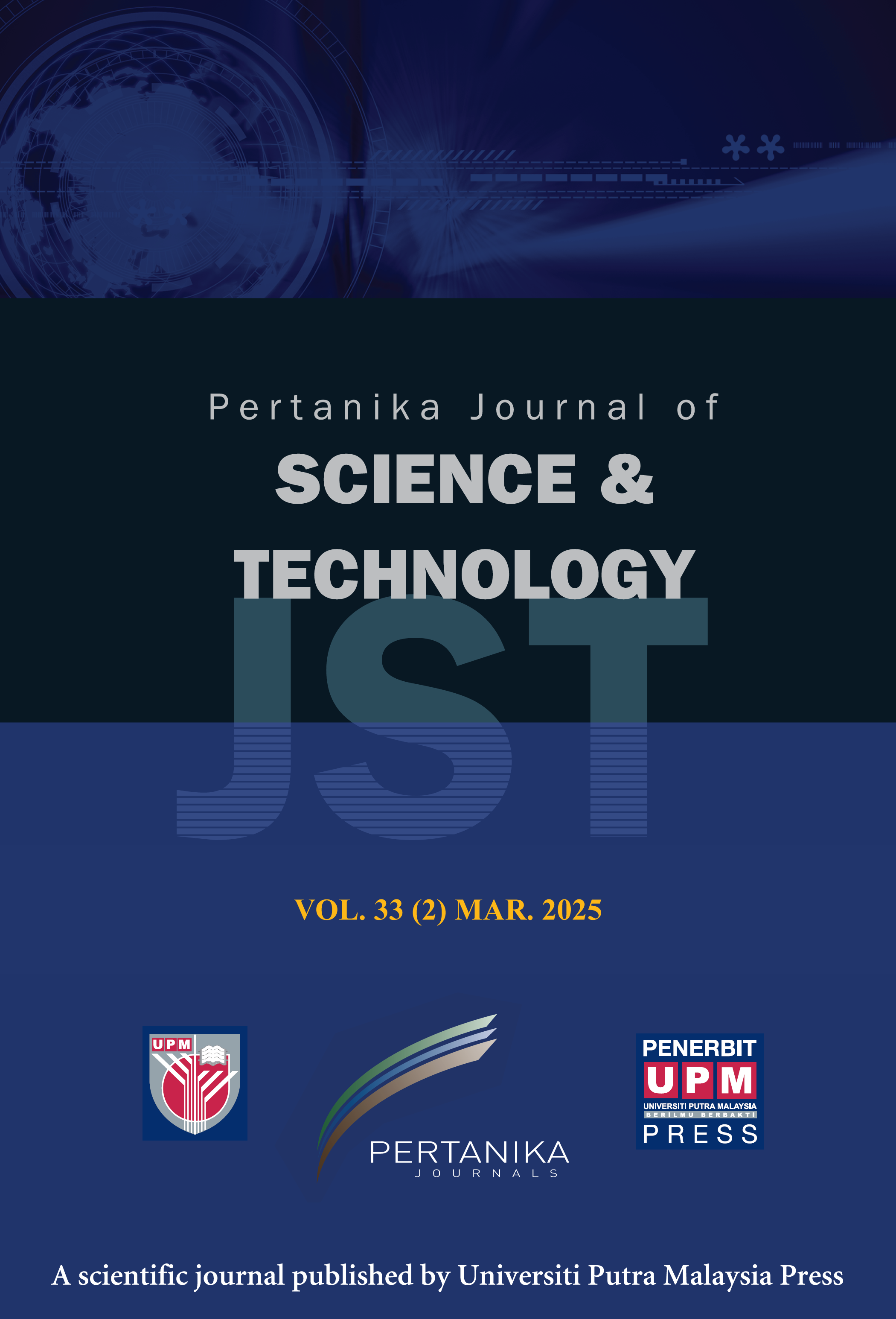PERTANIKA JOURNAL OF SCIENCE AND TECHNOLOGY
e-ISSN 2231-8526
ISSN 0128-7680
Generalized Fibonacci Search Method in One-Dimensional Unconstrained Non-Linear Optimization
Chin Yoon Chong, Soo Kar Leow and Hong Seng Sim
Pertanika Journal of Science & Technology, Volume 29, Issue 2, April 2021
DOI: https://doi.org/10.47836/pjst.29.2.17
Keywords: Fibonacci-type, Generalized Fibonacci search, golden section
Published on: 30 April 2021
In this paper, we develop a generalized Fibonacci search method for one-dimensional unconstrained non-linear optimization of unimodal functions. This method uses the idea of the “ratio length of 1” from the golden section search. Our method takes successive lower Fibonacci numbers as the initial ratio and does not specify beforehand, the number of iterations to be used. We evaluated the method using Microsoft Excel with nine one-dimensional benchmark functions. We found that our generalized Fibonacci search method out-performed the golden section and other Fibonacci-type search methods such as the Fibonacci, Lucas and Pell approaches.
-
Avriel, M., & Wilde, D. J. (1966). Optimally proof for the symmetric Fibonacci search technique. Fibonacci Quarterly Journal, 265-269.
-
Bazaraa, M. S., Sherali, H. D., & Shetty, C. M. (2013). Nonlinear programming: Theory and algorithms. John Wiley & Sons.
-
Beamer, J. H., & Wilde, D. J. (1971). Minimax optimization of a unimodal function by variable block derivative search with time delay. Journal of Combinatorial Theory, Series A, 10(2), 160-173. https://doi.org/10.1016/0097-3165(71)90019-7
-
Belegundu, A. D., & Chandrupatla, T. R. (2019). Optimization concepts and applications in engineering. Cambridge University Press.
-
Catarino, P., Campos, H., & Vasco, P. (2016). On the Mersenne sequence. CM-Centro de Matemática, 46, 37-53.
-
Chong, C. Y., & Ho, C. K. (2015, December). Some Properties of generalized Fibonacci sequence. In AIP Conference Proceedings (Vol. 1691, No. 1, p. 040004). AIP Publishing LLC. https://doi.org/10.1063/1.4937054
-
Demir, A., Omur, N., & Ulutas, Y. T. (2008). Optimization by k-Lucas numbers. Applied mathematics and computation, 197(1), 366-371. https://doi.org/10.1016/j.amc.2007.07.045
-
Hassin, R. (1981). On maximizing functions by Fibonacci search. Fibonacci Quarterly, 19, 347-351.
-
Horadam, A. F. (1965). Basic properties of a certain generalized sequence of numbers. The Fibonacci Quarterly, 3(3), 161-176.
-
Horzum, T., & Kocer, E. G. (2009). On some properties of Horadam polynomials. International Mathematical Forum, 4(25), 1243-1252.
-
Kiefer, J. (1953). Sequential minimax search for a maximum. Proceedings of the American Mathematical Society, 4(3), 502-506. https://doi.org/10.2307/2032161
-
Kilic, E. (2007). The generalized order-k Fibonacci–Pell sequence by matrix methods. Journal of Computational and Applied Mathematics, 209(2), 133-145. https://doi.org/10.1016/j.cam.2006.10.071
-
Koshy, T. (2019). Fibonacci and Lucas numbers with applications (2nd Ed.). John Wiley & Sons.
-
Luenberger, D. G., & Ye, Y. (1984). Linear and nonlinear programming (Vol. 2). Addison-wesley.
-
Mathews, J. H., & Fink, K. D. (2004). Numerical methods using MATLAB (Vol. 4). Pearson prentice hall.
-
Oliver, L. T., & Wilde, D. J. (1964). Symmetric sequential minimax search for a maximum. Fibonacci Quarterly, 3, 169-176.
-
Rao, S. S. (2019). Engineering optimization: Theory and practice. John Wiley & Sons.
-
Solomon, J. (2015). Numerical algorithms: Methods for computer vision, machine learning, and graphics. CRC press.
-
Subasi, M., Yildirim, N., & Yildiz, B. (2004). An improvement on Fibonacci search method in optimization theory. Applied mathematics and computation, 147(3), 893-901. https://doi.org/10.1016/S0096-3003(02)00828-7
-
Udrea, G. (1996). A note on the sequence (Wn)n ≥ 0 of AF Horadam. Portugaliae Mathematica, 53(2), 143-156.
-
Witzgall, C. (1969). Fibonacci search with arbitrary first evaluation. Boeing Scientific Research Labs Seattle Wa Mathematics Research Lab.
ISSN 0128-7680
e-ISSN 2231-8526




